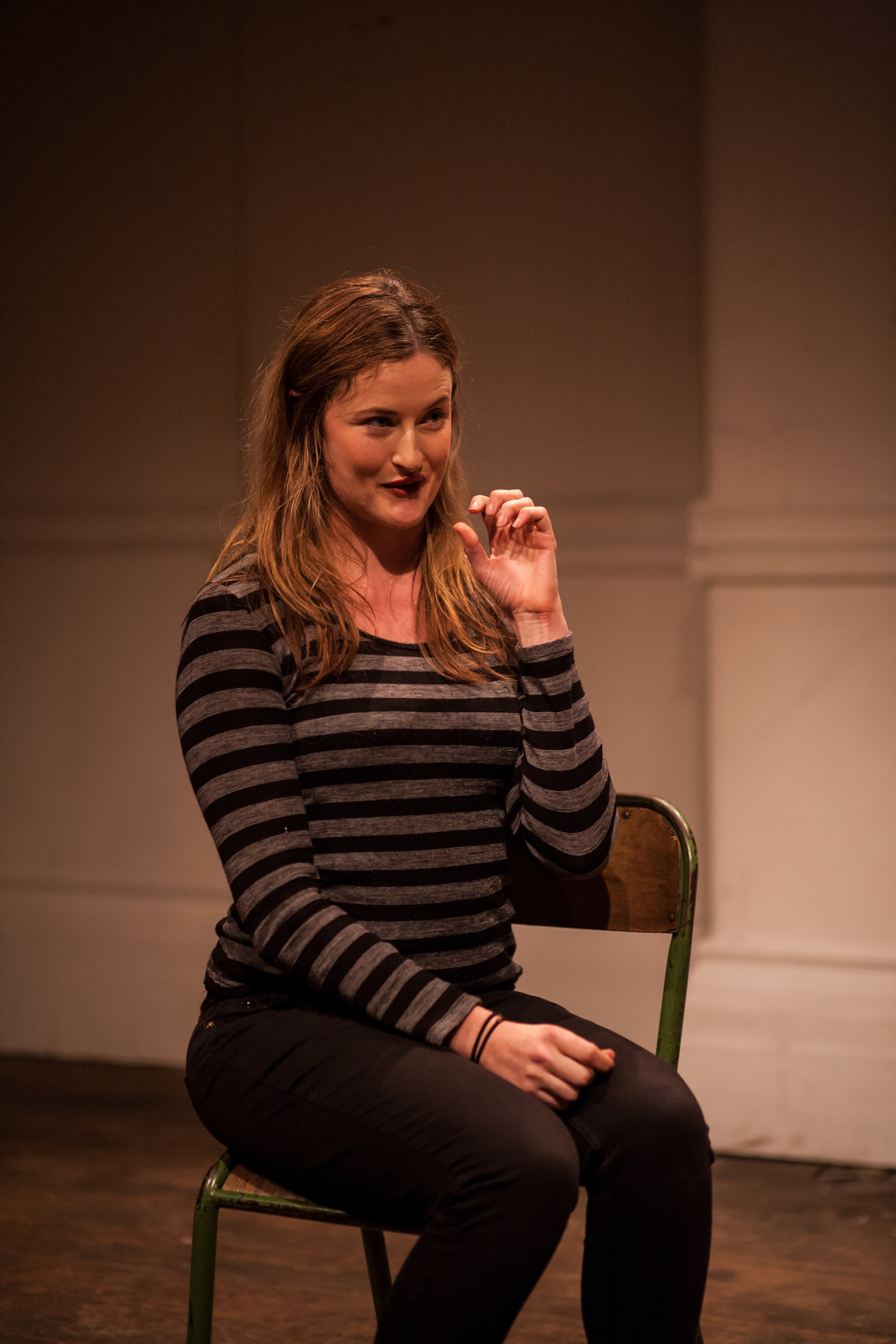This post originally appeared at www.erinsiobhanh.com/blog on 31st December 2015
“You can discover more about a person in an hour of play than in a year of conversation.” Plato
In September 2014, I was at a crossroads personally and professionally. I found myself back in London after a year away, looking for work opportunities and armed with an idea for a performance I wanted to make.
I had left London in August 2013 to work in Germany and New Zealand. New Zealand, the land of the long white cloud, hobbits and Flight of the Conchords, is where I consider home even though I haven’t lived there in nearly 10 years. I chose to leave a long tour of A Midsummer Night’s Dream in Germany in order to be a bridesmaid at my sister’s wedding, a difficult decision at the time – the actors among you will know that turning down work goes against the grain – but one which I certainly didn’t regret.
While I was in New Zealand I met more of my sister’s friends within the Deaf community there, as well as her husband's Deaf friends visiting from America. The wedding was interpreted by a fantastic SLI, and the wedding party was both D/deaf and hearing. In the following weeks, I started to think about using sign language in my own artistic performance practice. Having studied acting and worked in the industry professionally for nearly ten years across six countries, I had not come across many Deaf theatre companies or companies making interesting accessible theatre. I had specialised in experimental physical theatre and then gone on to study imaginative text-based realist performance at Stella Adler, and I had always been interested in personal, autobiographical performance, but it had not occurred to me until this point to look to my own background - a family that communicates using a mixture of spoken English, New Zealand sign language, sign supported English and home sign - as inspiration for my work.
With my sister and mother in the 80s
Returning to the UK with a kernel of an idea for a show, various pieces of research, transcripts of interviews I had conducted, and a couple of scenes written, I wasn’t really sure how to go about taking things further. I’d run a fringe theatre company with two friends in Australia a few years prior but since moving to the UK I had worked exclusively on theatre and film projects for other companies. I knew I wanted to get back to making my own work, but I didn’t have the professional networks set up to make the process smoother.
Then I found Jennifer Bates and The Deaf & Hearing Ensemble.
After an initial meeting to discuss the idea for the show, which I had tentatively named People of the Eye*, Jennifer and I met in a rehearsal room at The Royal Central School of Speech and Drama, where she had recently become a Masters student, to try a couple of scenes - the two which were the most developed based on work I had already done on them. Then Jennifer was sent some information about a scratch night at the Battersea Arts Centre and we decided we may as well apply, thinking we probably wouldn’t be selected. But we were. Jen knew Sophie Stone was perfect for the project, and despite the fact that we didn’t have any money at all, Sophie generously agreed to be involved. We only had two rushed rehearsals to create a 10 minute piece, but we instantly found a shared language, connection with the material and desire to make something worthwhile.
Sophie and I at BAC
The beginning of 2015 brought an Arts Council application and an office/rehearsal space at LimeWharf in Hackney, where the team has been unfailingly supportive to artists such as ourselves and we made many valuable connections. For two wonderful weeks in April we were able to experiment and play. Jennifer strongly believes in utilising play theory in her rehearsals. I was very open to making changes to my written material, using it as a basis to devise from but to add or discard ideas where necessary, and Sophie is a very skilled and generous deviser, willing to contribute her own experiences and boundless imagination. We were also supported by outside eyes Stephen Collins, Nadia Nadarajah, David Sands, Tessa Parr and Lucy Ellinson. Our technical creative team Emma Houston, Gerry Maguire, Oliver Savidge and David Monteith-Hodge made invaluable contributions.
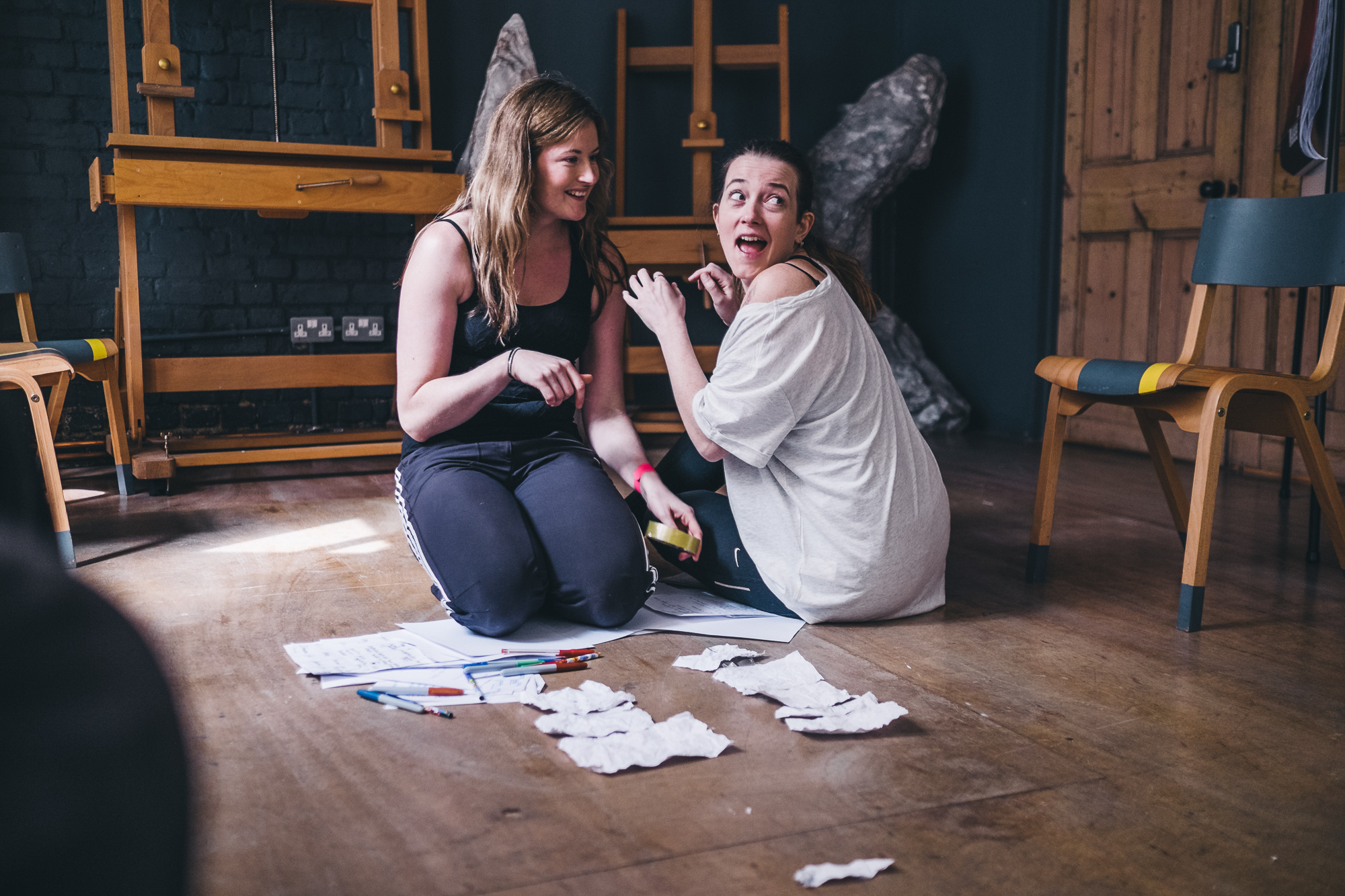
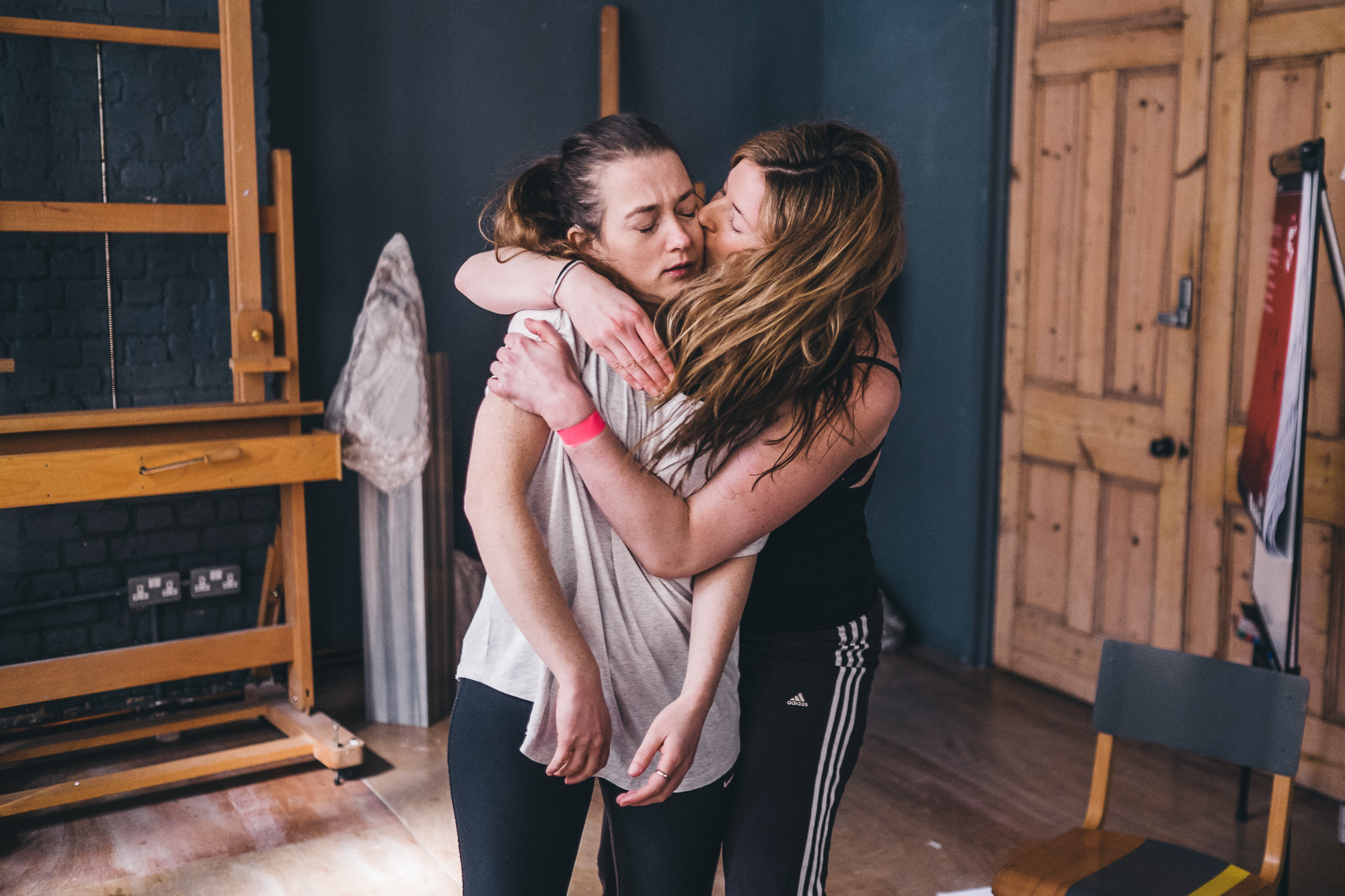

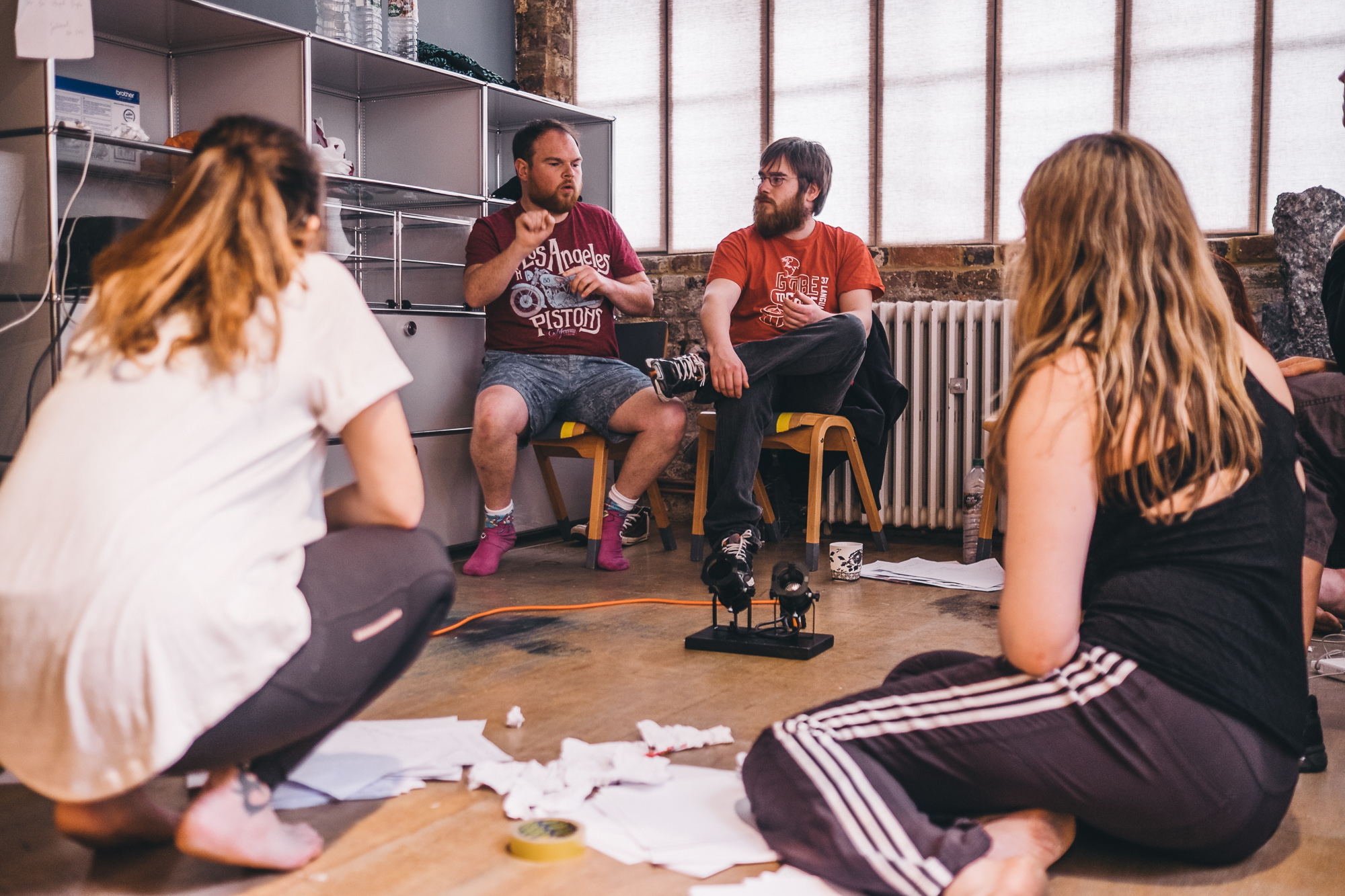

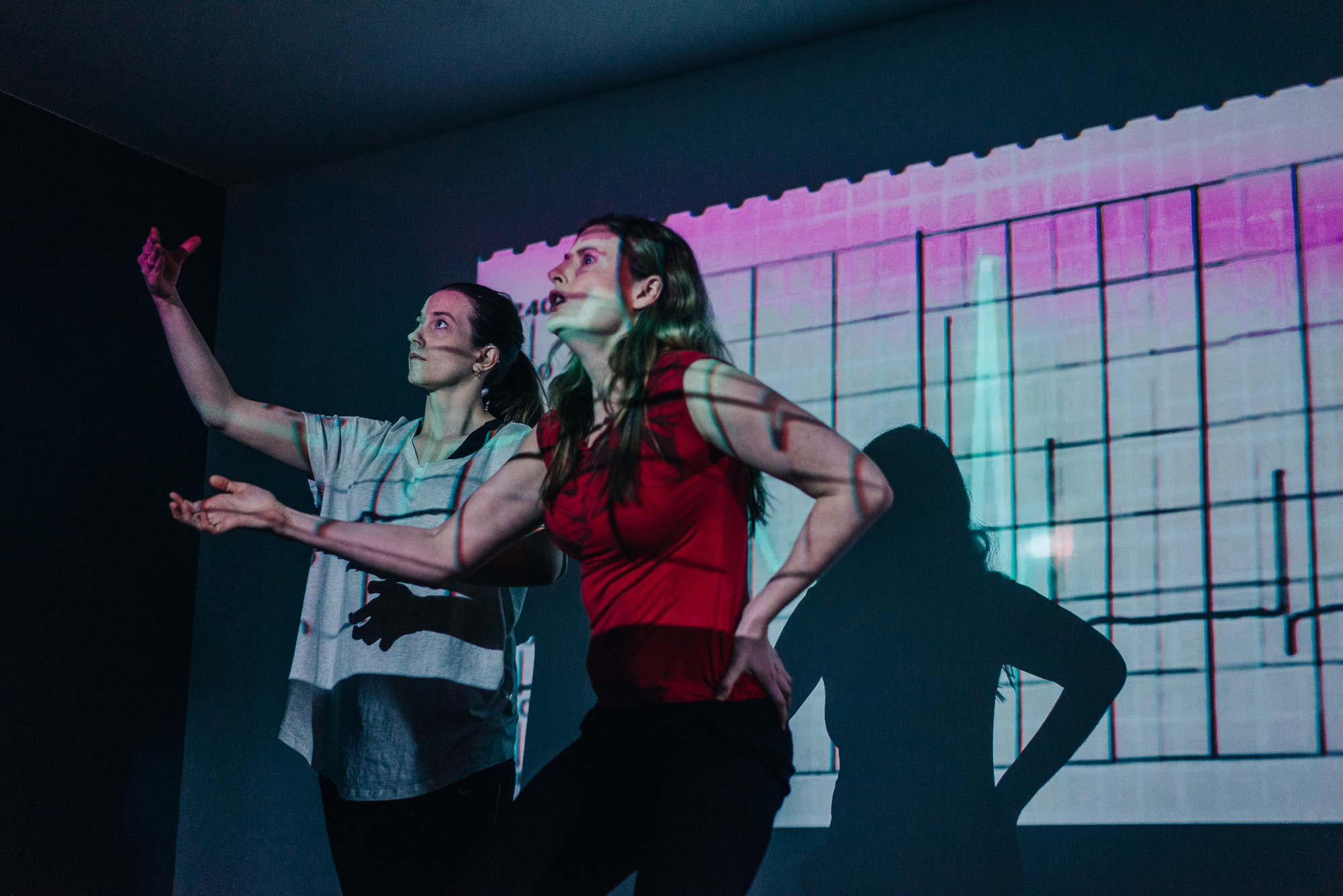
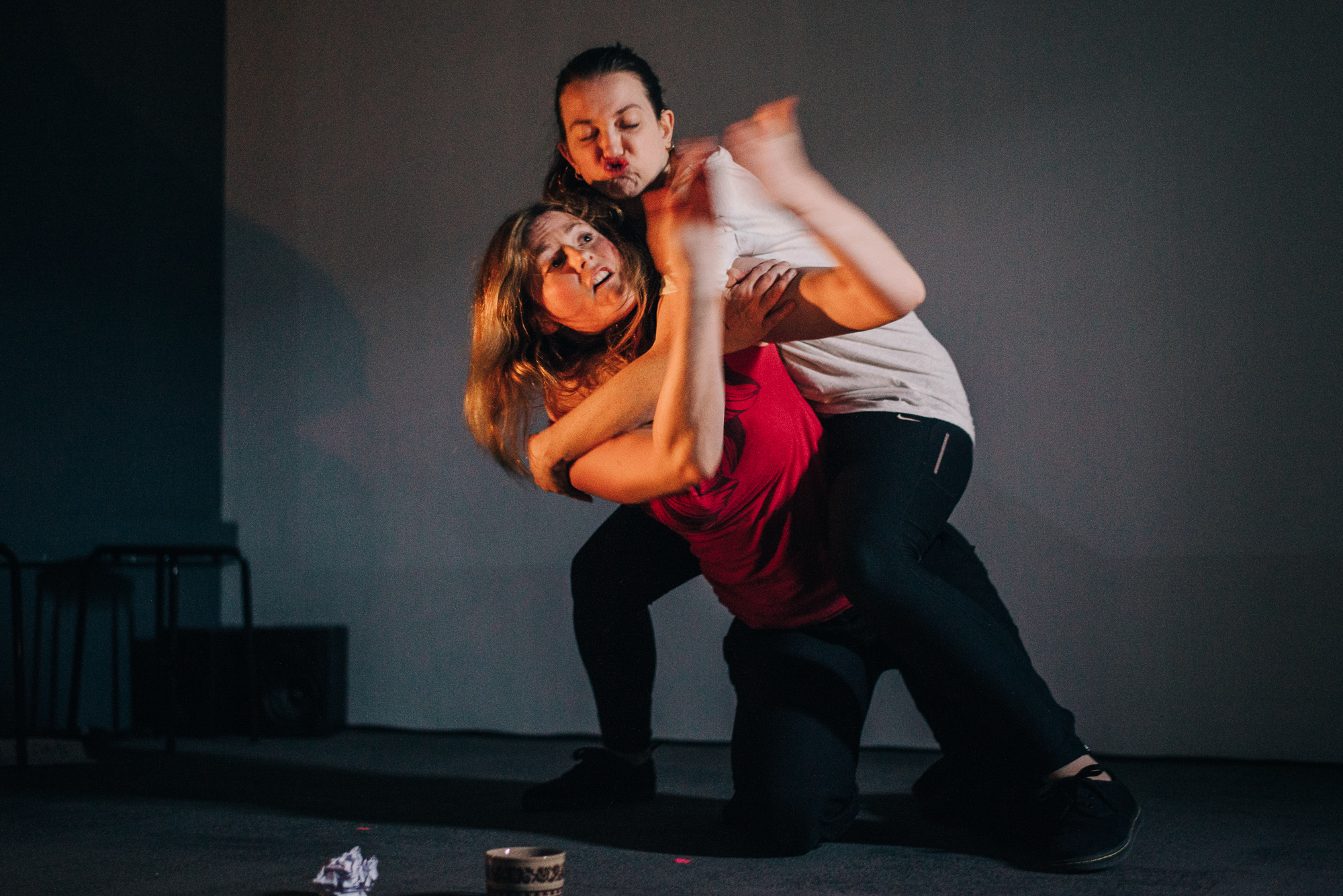

Rehearsal shots from our first R&D for People of the Eye, photo credits David Monteith-Hodge
We decided to invite the audience to share in open discussions after our first two performances - nerve-wracking for the artists, but ultimately very worthwhile. The company’s aim to create a space in which barriers can be broken down – performer/audience, D(d)eaf/hearing, across ages and cultural backgrounds – means that it makes sense for us to ask our audiences directly what they like and what they want to see more of.
A small section of the post show discussion at LimeWharf, April 2015. From left: Sophie Stone, Erin Siobhan Hutching, Jennifer Bates, Sophie Allen (SLI), Tracey Tyer (SLI - seated)
Around this time we began to correspond with Matthew Caines, the editor of the Cultural Professionals section of the Guardian, who invited us to contribute an opinion piece. This really gave us the opportunity to think about our voice as a company, and what we have to say. Editing four artist's contributions down to the required word limit was probably the most challenging part!
We were invited to present 20 minutes of People of the Eye at Pulse Festival at the New Wosley in Ipswich, for the Suitcase Prize curated by China Plate, and to present the full work in progress piece for the Last Word Festival at The Roundhouse in London the next day. This was the second time the company had been invited to perform at The Roundhouse, and we hope for a long and healthy relationship with that wonderful venue. We were able to have a further two days of rehearsal before these performances, in which we added some material which we hadn’t had time to rehearse in our initial two week R&D, and rehearse some new transitions for the selection of scenes we would be doing at Pulse Festival. During this weekend Sophie and I stayed overnight in shared accommodation and we were set a series of tasks by Jennifer to develop our “sisterly” relationship outside the rehearsal room.
So that was May 2015. We knew we would be performing the piece at Forest Fringe in August, and I spent some time after The Roundhouse performance restructuring the material. We were fortunate to be offered a slot at Shuffle Festival in Mile End in July, in which we were able to trial the new structure and experience an outdoor festival environment in which audience members were free to come and go as they pleased. We even had a dog run on “stage” at one point! It was a really valuable experience because we were able to test ourselves by performing in a non-traditional space, and we received very positive feedback for our performance despite not having things we might take for granted in a more traditional venue, such as the ability to black out the space completely. The concept of Shuffle Festival, which is designed to bring together the community in Tower Hamlets Cemetery Park with outdoor films and performances, is fantastic and it relies on volunteers. The festival began in 2013 and is curated by a local resident you may have heard of, filmmaker Danny Boyle.
At the end of July I headed up to Edinburgh to start working for the Gilded Balloon. The Fringe Festival is a truly unique environment, and it completely consumes those who venture to take part in it. I saw about 50 shows, of varying quality, but each of them helped me solidify my own ideas about what I wanted an audience member to take away from my work. Some particularly excellent pieces which were accessible for Deaf audiences were Can I Start Again Please by Sue McLaine and Nadia Nadarajah (who we’re proud to say is part of our Ensemble) and Graeae’s The Solid Life of Sugar Water. Inspiring personal pieces framed in original, innovative ways such as Jo Clifford’s The Gospel According to Jesus, Queen of Heaven and Emma Frankland’s None of Us is Yet a Robot; beautiful physical theatre like Gecko’s Institute; and smart, snappy new writing like Made in China’s Tonight I’m Gonna Be The New Me, Ruaraidh Murray’sAllie and Action Hero’s Wrecking Ball also stood out as containing elements of the kind of theatre I’d like to make.
A number of the shows that I’ve listed were also part of the Forest Fringe's fantastic program and The Deaf & Hearing Ensemble’s Access Day there, organised with Solar Bear Theatre Company. Although I had little to do with the organisation of this (Jennifer does an amazing job at matching theatre companies with BSL interpreters) it was really gratifying to see exciting Fringe shows made accessible to D/deaf audience members, and to witness how allowing an interpreter to become part of the piece rather than standing off to one side can add an additional rich layer to the work. Forest Fringe is an essential part of the theatrical landscape, a safe, supportive environment for artists to present experimental, innovative and at times provocative work. We hope our collaboration with Andy, Ira and Deborah will continue for a long time. Forest Fringe also hosted the iF Platform's forum "iF Not Now, When?" on the same day as our Access Day, which meant we were able to share a venue with artists we admire such as Jenny Sealey of Graeae Theatre Company and Jess Thom (Tourretteshero) who were speaking in the forum, as well as catch up with the wonderful Paula Garfield from Deafinitely Theatre, who has been a real support to our company. As well as performing People of the Eye (still in a work in progress stage, but much further along than the early showings) and organising the interpreters for the performances, the Ensemble also set up a fun play area, created by our enthusiastic interns Rachael Merry and Angel Stone.
Our play area, Forest Fringe 2015
Throughout the various work in progress incarnations of People of The Eye that we had performed, we had struggled to find an ending, feeling that the story was unfinished. Perhaps the pressure of telling a story which is so personal to all of us contributed to this. We tried many different things but each time the story felt incomplete – fine for a work in progress, but we are aiming towards a full show. Finally, during our only day of rehearsal before Forest Fringe, something clicked. The humour in the piece is very important to us, as is the relationship between the two central characters, the sisters. We were able to develop an ending for this performance which felt right, and we were told by several audience members that we should take the “work in progress” off our show title, as it felt more complete than many other shows they’d seen at the Fringe. The company agreed that this was the best performance we had done yet, but we also agreed that we want to rework it significantly before we present it as a full show in 2016.
At this point in time we are looking for a videographer/animator to work with us to visually represent soundscape and develop creative captioning. We would love to work with a D/deaf animator or videographer alongside our hearing soundscape artist, in the spirit of the Deaf & Hearing Ensemble. We are also looking for a D/deaf choreographer to work with us on movement and improve our BSL for performance. We’ve got some exciting opportunities on the cards for this show in 2016 which we hope to confirm and share very soon!
In addition to working on People of the Eye, The Deaf & Hearing Ensemble is producing an event on 1st March at Genesis Cinema where artists are invited to present 10 minute scratch pieces which are accessible for D/deaf and hearing audiences. We are aware that there aren't many opportunities for D/deaf artists to present work in progress pieces in the ‘mainstream’ theatre community, and that many hearing artists are interested in developing accessibility in their work but they may not be sure how to approach it. We hope to provide a platform for both of these things to occur.
In October, Jennifer and Sophie facilitated a workshop with Southwark Playhouse's Young Company which was received enthusiastically. Hopefully we will be able to expand our work with Southwark Playhouse to include running workshops for a group of young Deaf & Hearing perfomers in 2016. Ensemble members Nadia Nadarajah and David Sands ran a schools workshop which received excellent feedback earlier in the year, and this is an area we'd like to move into. Jennifer also ran a workshop at Solar Bear's Progression 2015 conference, setting the attendees of her workshop playful tasks to improve communication and break down barriers.
The Ensemble has also been awarded a commission to conduct a Research and Development with the aim of creating an outdoor performance for Liberty Festival.
Apart from working with the DH Ensemble, in 2015 I have been lucky enough to work with a range of talented artists - I reunited with La JohnJoseph to being work on a new piece; worked with a new immersive heatre company Hush Hush Hoopla; continued producing my own staged play reading event World Dramaturgy with Elena Liutkute focussing on international scripts ; worked on a theatre research week with Admiration Theatre; and appeared in a few small TV and commercial roles. I have new actor representation - APM Associates. All of this work is significant. However, I feel that I have found a home in a supportive environment and a niche for myself as an artist in the cultural landscape with The Ensemble, contributing what I can as a performer, producer, deviser and writer to helping this exciting, unique company grow. The artists who have worked with The Deaf & Hearing Ensemble rotate on a project by project basis but once you are part of the Ensemble, you always will be. We look forward to welcoming new members in 2016.
* "They are first, last, and all the time the people of the eye.” – G. Veditz, 1910. This was the inspiration for the name of the play.

